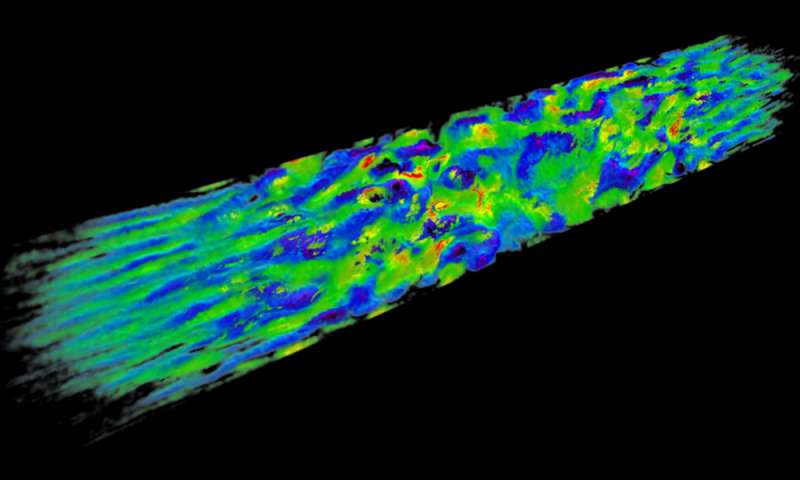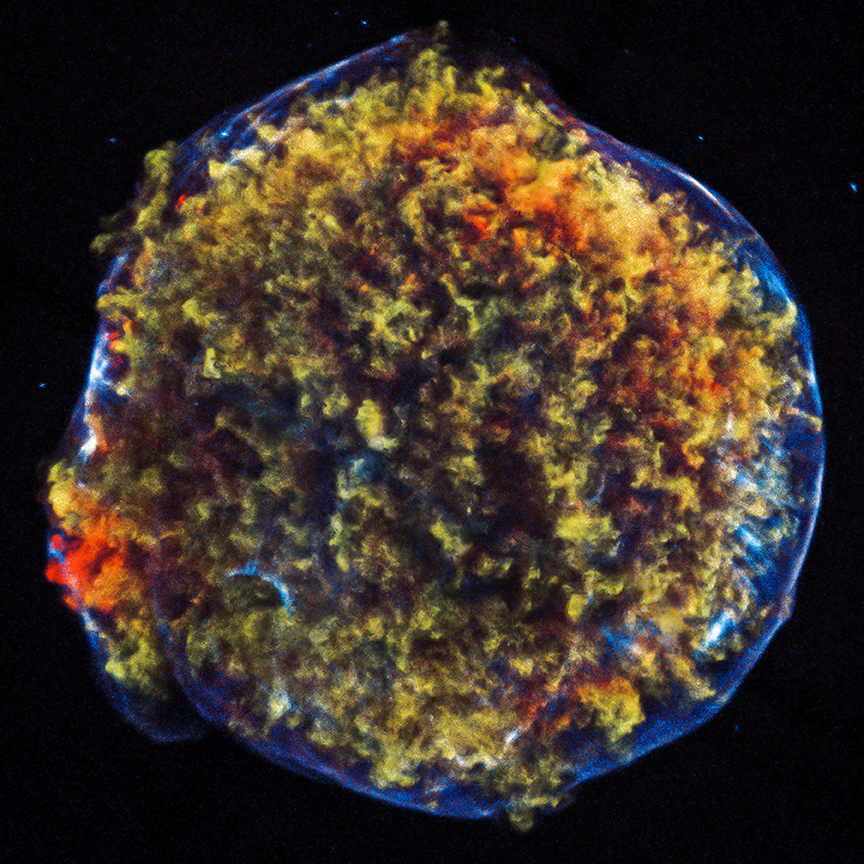Scientists use lasers to create miniature supernova shock waves on Earth

Researchers have created a miniature version of supernova shock waves in a lab here on Earth to solve a long-standing cosmic mystery.
When stars die and explode in supernovas, they create shock waves that emanate across the surrounding plasma. These powerful shock waves blast out cosmic rays, or highly energetic particles, out into the universe. The waves act almost like particle accelerators, pushing these particles out so fast that they approach the speed of light. However, scientists have yet to fully understand exactly how and why the shock waves accelerate these particles.
"These are fascinating systems, but because they are so far away it's hard to study them," Frederico Fiuza, a senior staff scientist at the Department of Energy's SLAC National Accelerator Laboratory, who led the new study, said in a statement.
Related: Supernova Photos: Great Images of Star Explosions
So, to better study these cosmic shock waves, scientists brought them to Earth. Well, not literally, but researchers have created a scaled-down version of supernova remnants. "We are not trying to make supernova remnants in the lab, but we can learn more about the physics of astrophysical shocks there and validate models," Fiuza said in the statement.
Fiuza and his colleagues worked to create a fast, diffuse shock wave that could mimic the shocks that follow a supernova. The scientists worked at the National Ignition Facility, a Department of Energy facility at the Lawrence Livermore National Laboratory in California. At this facility, the researchers shot powerful lasers at carbon sheets to create two plasma flows, targeted at each other. When the plasma flows collided, they created a shock wave "in conditions similar to a supernova remnant shock," according to the statement. The scientists observed the experiment using both optical and X-ray technology.

By studying a miniature analog of the cosmic phenomenon here on Earth, the researchers verified that the shock was capable of accelerating electrons to nearly the speed of light. However, the mystery of exactly how these electrons reached such speeds remains, which prompted the scientists to turn to computer modeling.
Get the Space.com Newsletter
Breaking space news, the latest updates on rocket launches, skywatching events and more!
"We can't see the details of how particles get their energy even in the experiments, let alone in astrophysical observations, and this is where the simulations really come into play," Anna Grassi, a co-author on the new research also at SLAC, said in the same statement.
Now, while the cosmic mystery of the shock wave accelerated particles remains, computer models created by Grassi revealed one possible solution. According to these models, Grassi developed, turbulent electromagnetic fields within the shock wave could accelerate electrons to the speeds observed.
Fiuza, Grassi and their colleagues will continue to investigate the X-rays emitted by the accelerated electrons and hone their computer simulations, according to the statement. Other future research will study positively charged protons, in addition to the electrons studied in this work, blasted by the shock wave.
This work was published June 8 in the journal Nature Physics.
- Know Your Novas: Star Explosions Explained (Infographic)
- Star Quiz: Test Your Stellar Smarts
- Watch As a Supernova Morphs and Its Speedy Shock Waves Reverse
Email Chelsea Gohd at cgohd@space.com or follow her on Twitter @chelsea_gohd. Follow us on Twitter @Spacedotcom and on Facebook.
OFFER: Save 45% on 'All About Space' 'How it Works' and 'All About History'!
For a limited time, you can take out a digital subscription to any of our best-selling science magazines for just $2.38 per month, or 45% off the standard price for the first three months.
Join our Space Forums to keep talking space on the latest missions, night sky and more! And if you have a news tip, correction or comment, let us know at: community@space.com.

Chelsea “Foxanne” Gohd joined Space.com in 2018 and is now a Senior Writer, writing about everything from climate change to planetary science and human spaceflight in both articles and on-camera in videos. With a degree in Public Health and biological sciences, Chelsea has written and worked for institutions including the American Museum of Natural History, Scientific American, Discover Magazine Blog, Astronomy Magazine and Live Science. When not writing, editing or filming something space-y, Chelsea "Foxanne" Gohd is writing music and performing as Foxanne, even launching a song to space in 2021 with Inspiration4. You can follow her on Twitter @chelsea_gohd and @foxannemusic.
-
An explosion of a supernova is annihilation nuclear explosion, this explosion creates a time-space antigravitational shock wave, which tearing electrons and plasmatise all mass around and gives the initial speed of all nuclei from the center of the explosion. For real simulations, you need our fission-annihilation Gravi-nuclear reactor and antigravitational propulsion.Reply
Mod Edit - Link Removed










